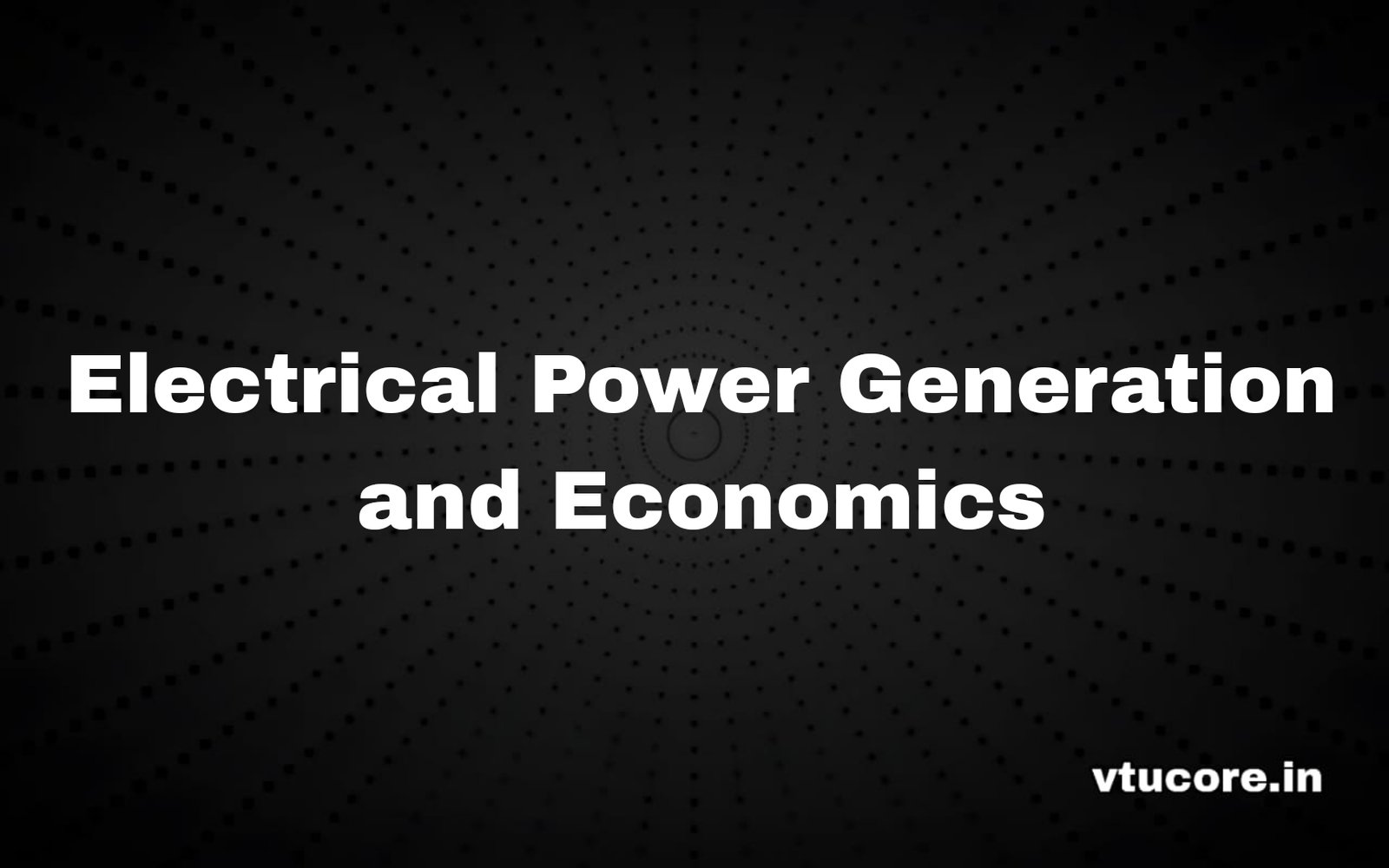Electrical Power Generation and Economics BEE405A
Course Code: BEE405A
Credits: 03
CIE Marks: 50
SEE Marks: 50
Total Marks: 100
Exam Hours: 03
Total Hours of Pedagogy: 40H
Teaching Hours/Weeks: [L:T:P:S] 3:0:0:0
Hydroelectric Power Plants: Hydrology, run off and stream flow, hydrograph, flow duration curve, Mass curve, reservoir capacity, dam storage. Hydrological cycle, merits and demerits of hydroelectric power plants, Selection of site. General arrangement of hydel plant, elements of the plant, Classification of the plants based on water flow regulation, water head and type of load the plant has to supply. Water turbines – Pelton wheel, Francis, Kaplan and propeller turbines. Characteristic of water turbines Governing of turbines, selection of water turbines. Underground, small hydro and pumped storage plants. Choice of size and number of units, plant layout and auxiliaries.
Steam Power Plants: Introduction, Efficiency of steam plants, Merits and demerits of plants,
selection of site. Working of steam plant, Power plant equipment and layout, Steam turbines,
Fuels and fuel handling, Fuel combustion and combustion equipment, Coal burners, Fluidized bed
combustion, Combustion control, Ash handling, Dust collection, Draught systems, Feed water,
Steam power plant controls, plant auxiliaries.
Diesel Power Plant: Introduction, Merits and demerits, selection of site, elements of diesel
power plant, applications.
Gas Turbine Power Plant: Introduction Merits and demerits, selection of site, Fuels for gas
turbines, Elements of simple gas turbine power plant, Methods of improving thermal efficiency
of a simple gas power plant, Closed cycle gas turbine power plants. Comparison of gas power plant
with steam and diesel power plants.
Nuclear Power Plants: Introduction, Economics of nuclear plants, Merits and demerits, selection of site, Nuclear reaction, Nuclear fission process, Nuclear chain reaction, Nuclear energy, Nuclear fuels, Nuclear plant and layout, Nuclear reactor and its control, Classification of reactors, power reactors in use, Effects of nuclear plants, Disposal of nuclear waste and effluent, shielding.
Substations: Introduction to Substation equipment; Transformers, High Voltage Fuses, High Voltage Circuit Breakers and Protective Relaying, High Voltage Disconnect Switches, Lightning Arresters, High Voltage Insulators and Conductors, Voltage Regulators, Storage Batteries, Reactors, Capacitors, Measuring Instruments, and power line carrier communication equipment. Classification of substations indoor and outdoor, Selection of site for substation, Bus-bar arrangement schemes and single line diagrams of substations.
Interconnection of power stations. Introduction to gas insulated substation, Advantages and economics of Gas insulated substation.
Grounding: Introduction, Difference between grounded and ungrounded system. System grounding – ungrounded, solid grounding, resistance grounding, reactance grounding, resonant grounding. Earthing transformer. Neutral grounding and neutral grounding transformer.
Economics: Introduction, Effect of variable load on power system, classification of costs, Cost analysis. Interest and Depreciation, Methods of determination of depreciation, Economics of Power generation, different terms considered for power plants and their significance, load sharing. Choice of size and number of generating plants. Tariffs, objective, factors affecting the tariff, types. Types of consumers and their tariff. Power factor, disadvantages, causes, methods of improving power factor, Advantages of improved power factor, economics of power factor improvement and comparison of methods of improving the power factor. Choice of equipment.

